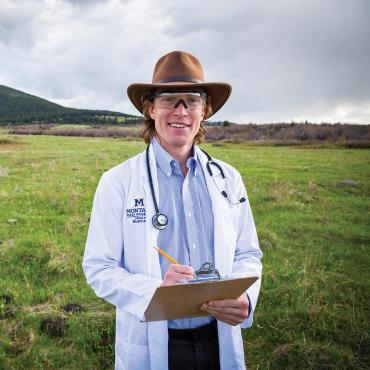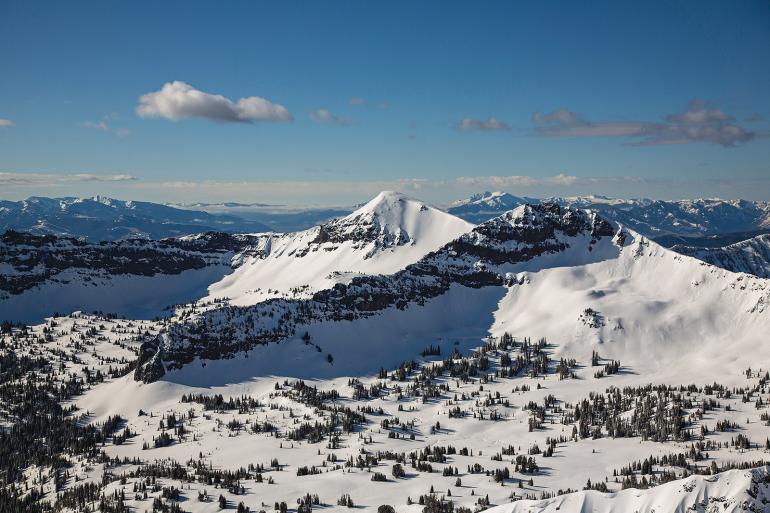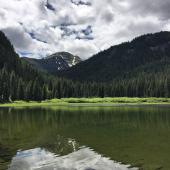Mega Magma Waterfalls
The dramatic geology of Hyalite.
Why does Hyalite Canyon have such a high concentration of amazing ice climbing? Oddly enough, because it used to house an active volcano. Let’s go back to subduction—recall from “Rocky Roots” (Fall 2021)—and take a closer look at what’s going on beneath the surface. When oceanic crust slides beneath continental crust, it dives into the mantle—the underground sea of magma. As it dives deeper, it gets hotter, and the oceanic crust starts to melt, itself turning into magma. Based on its mineral composition, this magma is less dense than the surrounding mantle, so it rises up like a hot-air balloon, causing the overlying continental crust to bulge. In some areas, the magma bursts all the way through the crust, creating volcanoes. The Gallatin Range was one such area, part of a huge volcanic field that stretched all the way from Bozeman to Cody. These volcanoes burst through the crust around 40 million years ago, in the middle of the Rocky Mountain–building event, spewing lava and ash onto Earth’s surface and causing huge volcanic landslides called “lahars.”
You can see this carnage in the walls of Hyalite. On one hand, we see basalt cliffs like those at Palisade Falls, which formed from a lava flow that cooled and contracted, making distinct vertical columns as the rock pulled apart from itself. On the other hand, we see jumbled mixes of mud, sand, gravel, and boulders, like at Silken Skein Falls, which are remnants of lahars set off by volcanic explosions. Lahars flow with so much energy that they entrain everything in their paths, from small mud particles to massive boulders. When these layers of lahars and lava flows stack on top of each other, they form cliffs that alternate between rock that is permeable to groundwater (lahars) and rock that is impermeable (basalt), causing water to spill out over the cliffs. In the winter, this water freezes as it spills out, forming beautiful columns of frozen ice that turn Hyalite into a winter-climbing paradise. So when you’re ice climbing in Hyalite, you are literally climbing up the middle of an ancient volcano. How ironic.
But how did those lava flows and lahars, originally deposited in broad, horizontal sheets, arrive at their current state of jagged, dramatic ridgelines separated by broad, sweeping valleys? In our next issue, for the fourth and final installment of this geology series, we’ll be looking at glacial geomorphology to get a sense for how our mountains were sculpted, and to learn why Montana’s soil is lousy for growing crops but great for grazing livestock.
Jack Taylor spends more time looking at mineral grains through a jeweler’s loupe when he goes out climbing than he does inspecting his own safety gear.














